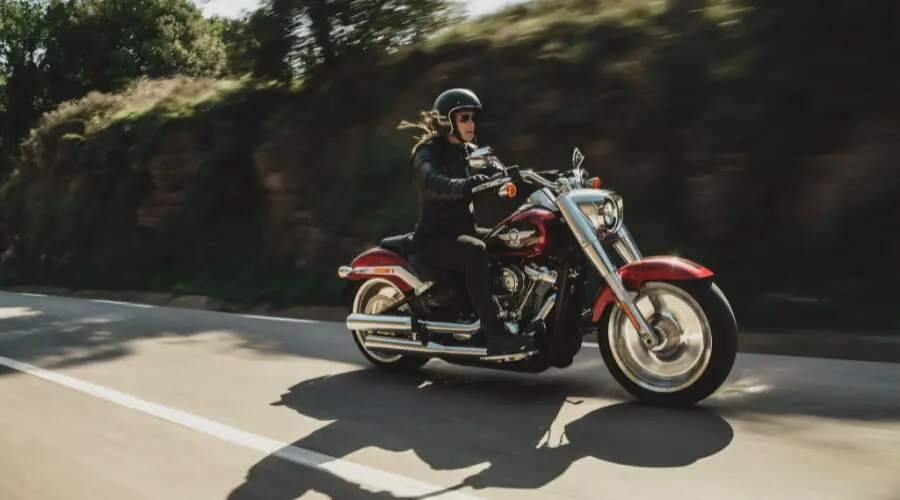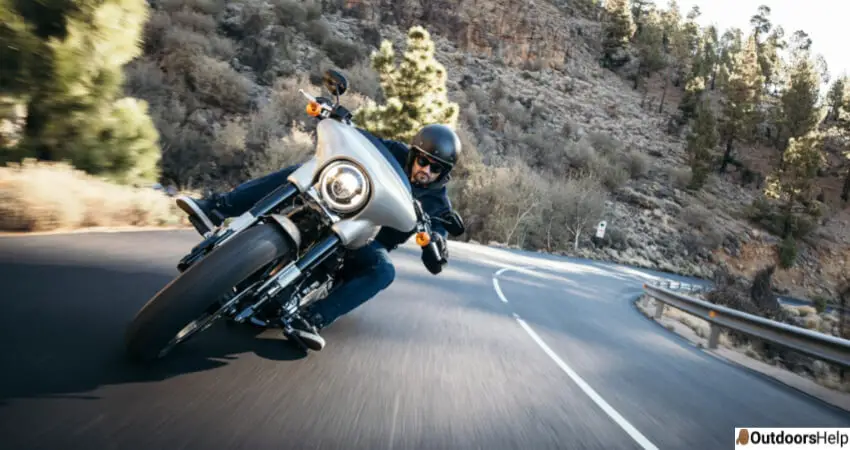Motorcycles continue to evolve, and we cannot fail to notice the increase in cubic capacity and torque in modern bikes. The truth is, in any debate of motorcycle performance, horsepower tends to take center stage – but a wise voice from the rear will eventually speak up and argue that torque is just as vital (if not more so).
What they fail to tell is you’ll need to strike a balance between the two because horsepower without enough torque results in screaming, high-revving engines that frequently fall off their power bands.
What Is Torque, Cubic Capacity, And RPM?
Torque– The term “torque” in the context of motorcycles refers to the motorcycles’ ability to pull. It can also be viewed as a force that starts the pivot. Force multiplied by the radius calculates torque.
Cubic capacity- The cubic capacity (cc) or displacement is the volume swept by the piston inside the cylinder. It determines the capacity of the engine.
If the cc is more, the engine is more powerful, but its fuel economy would be less as it would consume more fuel.
RPM- RPM stands for “revolution/rotations per minute” in its complete form. It refers to the engine’s crank rotation rate, sending power to the back wheels via a gearbox. Depending on the RPM, the torque produced by the bike reduces or increases.
A Review Of The Torque, Cubic Capacity, RPM, And Average Speed Of Different Bikes
Here is a review of 4 motorcycles, explaining their features, the torque, cubic capacity, average speed, and revolutions per minute on each of them.
A Table Illustrating The Motorcycle Model, Cubic Capacity, RPM, Torque, And Average Speed
| Motorcycle Model | Cubic Capacity | RPM | Torque | Average Speed |
| Honda Goldwing | 1832 cc | 5,500 | 123lb-ft | 81mph |
| Yamaha V-Max | 1198 cc | 6,500 | 123lb-ft | 80mph |
| Motus MSTR | 1645 cc | 7,800 | 126lb-ft | 85mph |
| BMW K1600GT | 1649 cc | 7,250 | 129lb-ft | 93mph |
1. Honda Goldwin
Honda Goldwing is a four-stroke bike with an 1832 cubic capacity. It has a diamond, triple-box-section aluminum twin-spar chassis, and 12 valves.
The engine is liquid-cooled with a compression ratio of 9.8 and a SOHC valve gear.
The max power is 117, the max power peak (rpm) is 5500 with a torque power peak (rpm) of 4000. The torque of this bike is 123ft/lb. Its average speed is 81mph.
2. Yamaha V-Max
Yamaha V-Max is an impressive four-stroke machine with an 1198 cc liquid-cooled engine. This bike is in the power cruiser class.
It has a 5-speed transmission with a compression ratio of 10.5:1.
The torque of this bike is 123lb-ft, and the torque power peak rpm is 6,500. The bike’s average speed is 80mph.
3. Motus MSTR
This bike is mainly found in America. The Motus MSTR has a four-stroke, 90-degrees-longitudinal v4 engine which is dual OHV and with hydraulic lifters. It has a capacity of 1645 cc/100 cu-in.
This bike boasts a firing order of 1-4-3-2 and an 11.5:1 compression ratio.
The torque of Motus MSTR is 126lb-ft and has a max power peak of 7800rpm.
The bike’s average speed is 85mph.
4. BMW K1600GT
This bike is a sport touring class. It has a capacity of 1649 cc (100.6 cu in).
It has a 12.2:1 compression ratio.
Its transmission is a 6-speed sequential manual, constant-mesh, shaft drive. It has a max power peak of 7250rpm and a torque of 129lb-ft. The average speed of this bike is 98mph.
Factors Affecting The Average Speed Of Motorcycles

1. Type Of Motorcycle (Ergonomics)
Sports motorcycles are faster than cruisers and naked motorcycles because their chassis design and engine are at the foundation. It’s all down to the motorcycle’s various body shapes and ergonomics. The handlebar position is essential in terms of ergonomics, and its location might influence the motorcycle’s speed. All racing and sports motorcycles feature an aggressive forward-leaning riding stance. At high speeds, the sports and super sports motorcycles aids in maintaining aerodynamics and preventing air resistance to the speed.
2. The Motorcycle Weight
The weight of the motorcycle itself is one of the components that influence its speed. The majority of manufacturers are attempting to reduce the weight of the bike. Every year, they introduce a new model, with the main message being that it is lighter than the previous model without sacrificing performance. To accomplish the motorcycle’s small weight, most parts have been replaced with lighter and more robust ones that can reduce the weight. As a result, if you want to reach top speed, you must consider the motorcycle’s weight. If you get a lightweight bike, you will quickly achieve the heavy motorcycle’s maximum peak speed.
3. The Motorcycle Engine
We have two types of engine design; two-stroke and four strokes. The speed and RPM of a two-stroke engine are higher than that of a four-stroke engine. As a result, two-stroke engines outperform four-stroke engines. So, if you want to go fast, two-stroke engines will give you more speed and RPM than a four-stroke cylinder engine of comparable capacity.
On the other hand, two-stroke engines are less expensive, less reliable, and less durable than four-stroke engines. Although a four-stroke engine is slower than a two-stroke, it has significant advantages. A four-stroke engine outperforms a two-stroke engine in terms of reliability, durability, and efficiency. It is quieter than two-stroke engines, making it more environmentally friendly. Four-stroke engines often have more parts than two-stroke engines, making them more expensive and requiring more maintenance. Unlike two-stroke engines, four-stroke engines do not require the pre-mixing of oil and fuel. In addition, unlike two-stroke engines, four-stroke engines do not expel burnt oil into the atmosphere along with burned fuel. As a result, the final judgment is that the two-stroke engine is the way to go if you want speed. However, four-stroke engines are the way to go if you desire dependability, durability, and efficiency.
4. The Number Of Cylinders
Cylinders are the engine’s power unit; they are where fuel is burned and converted into power. The number of cylinders impacts the motorcycle’s speed and RPM. Engines with more cylinders will perform and accelerate faster than engines with fewer cylinders. However, as the number of cylinders increase, so does the amount of fuel used.
Conclusion
Because of the facts mentioned above, sports bikes have lightweight, high-rise engines that propel them swiftly to high speeds and are built to accelerate hard and gain higher top speeds. They’re maintained light to keep their weight from affecting their performance. The torque shows the character of the motorcycle.

